
Val Müstair: scavenger hunt and hike in the Münstertal
Advertising – this article was created in cooperation with GraubündenParcs
After two exciting days in the Swiss National Park, our autumnal exploration tour through the Graubünden park landscape led us over the Ofen Pass to the regional nature park Biosfera Val Müstair. Together with the Swiss National Park and parts of the municipality of Scuol, it forms the UNESCO Biosphere Reserve Engiadina Val Müstair. In addition to the protection of valuable natural areas, biosphere reserves pursue a holistic approach in terms of sustainable development; creating a balance between ecological, economic and social goals. In spring 2015 we already reported on a Val Müstair excursion tip – this time we went in search of clues and discovered all kinds of surprising things.
Chatscha Jaura: puzzling hiking through Val Müstair
Since Val Müstair is not unknown to me, I wanted to get to know new facets of the valley landscape. It is precisely for such curious guests as I am that the “Chatsch Jaura” was designed. The free offer has been available since this summer season. You don’t need more than a double-page A4 information sheet, some brains and, ideally, hiking equipment. The information sheet leads you to the starting point, which is located in the middle of the historic center of Müstair. From here, the path leads along the Via Imperiala to the old «Chasharia». The small cheese dairy in the centre of the village will soon have its day. As part of a project to strengthen regional development, a new cheese dairy is currently being built on the outskirts of Müstair in combination with a meat centre for direct marketers and a new, modern grain collection point. The new building will enable the farmers in the valley to process their meat directly in the valley from A to Z in the future (there is currently no butcher’s shop in Val Müstair) and to strengthen local sales. Before we continue our march, we get a Biosfera packed lunch at the Hotel Helvetia – the perfect food for the journey.

Post 3 challenges us by surprise. Twice we take a wrong turn and puzzle over where this ominous red house is. In the end, it works out. We leave Müstair behind us and walk along the wonderfully rippling Rome up the valley towards Sta. Maria. On the way, we learn interesting facts about bear-proof waste bins and energy and electricity generation. After a short ascent, we reach a bench on an elevated position above Sielva, which proves to be a worthy resting place. With a magnificent view towards the Ofen Pass, we spread out the delicious contents of our packed lunch. I am excited! Above all, that they are all valley products – right down to the elderflower syrup.






Freshly strengthened, we continue to shaggy – there are still four puzzle items left for us to crack. With the combination of numbers of the last item, you will be rewarded with a free drink in the Café vom Meier-Beck. The opportunity to try the best organic nut cake in Switzerland, according to Kassensturz.


Traditionsbetriebe in Sta. Maria
Muglin Mall: where grain is slowly ground |
The “Khach Jaura” also passes traditional production sites. This includes the oldest functioning mill in Switzerland – the Muglin Mall. From 1676 onwards, undershot Strauber wheels drove the mill and stamping of the Paclera in the village alley until the canal was filled in a few decades ago. Thanks to many volunteers, the mill was put back into operation in 2004 and is now one of the main attractions of Sta. Maria. From May to October, public guided tours take place on Wednesdays, Fridays and Sundays between 4:00 p.m. and 6:00 p.m. You can buy the grain ground there outside the opening hours in the village shop in Sta. Maria and Müstair.
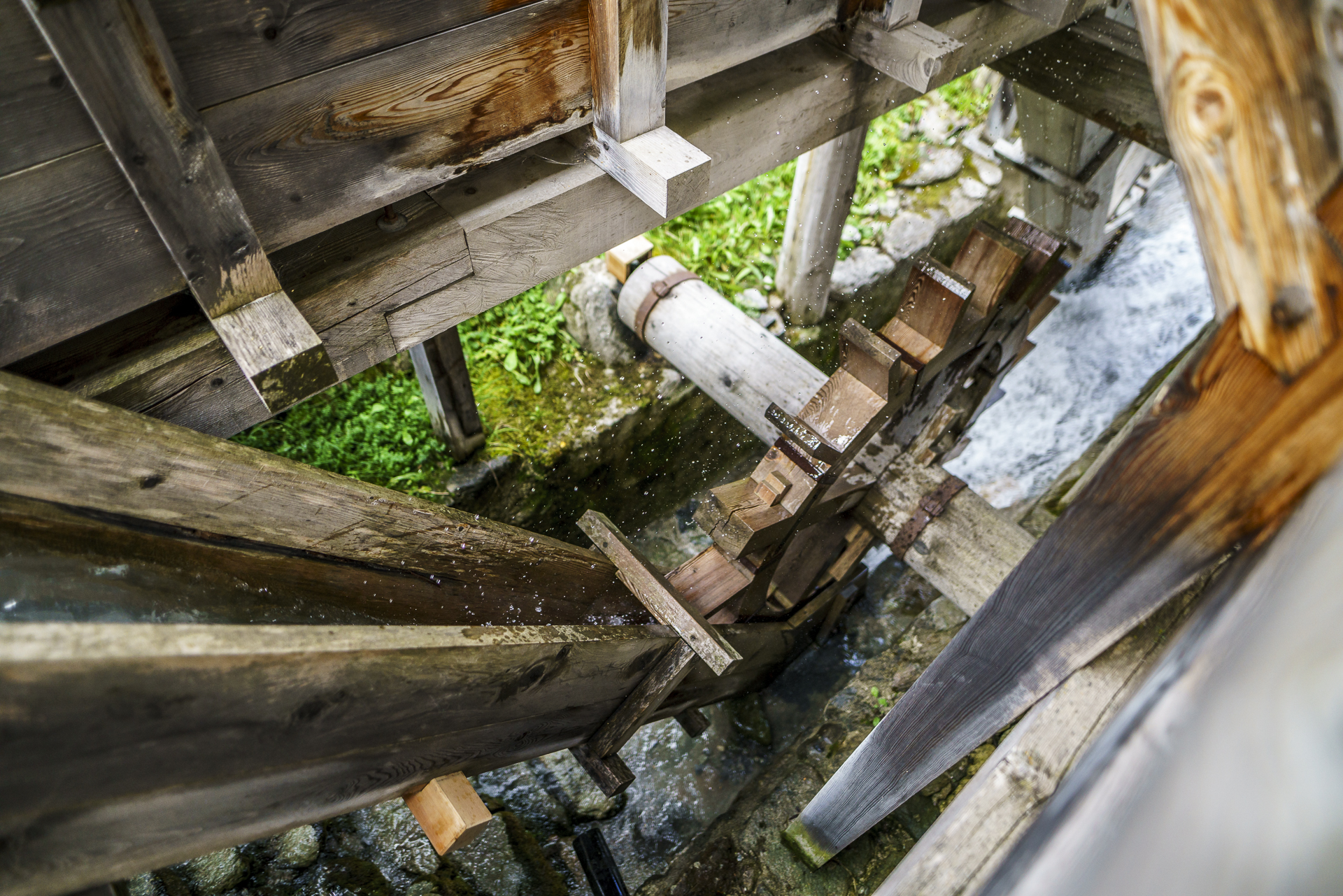

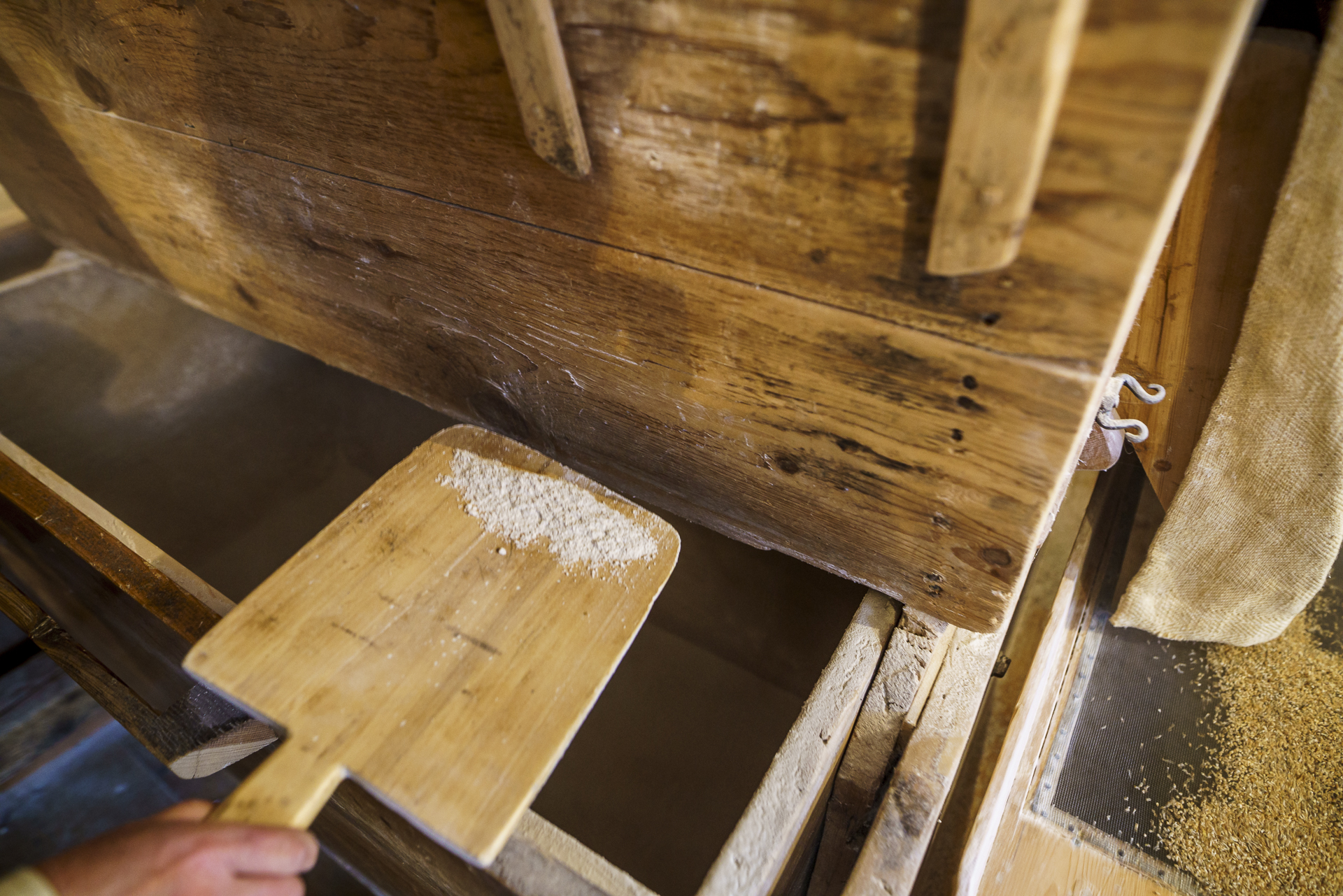


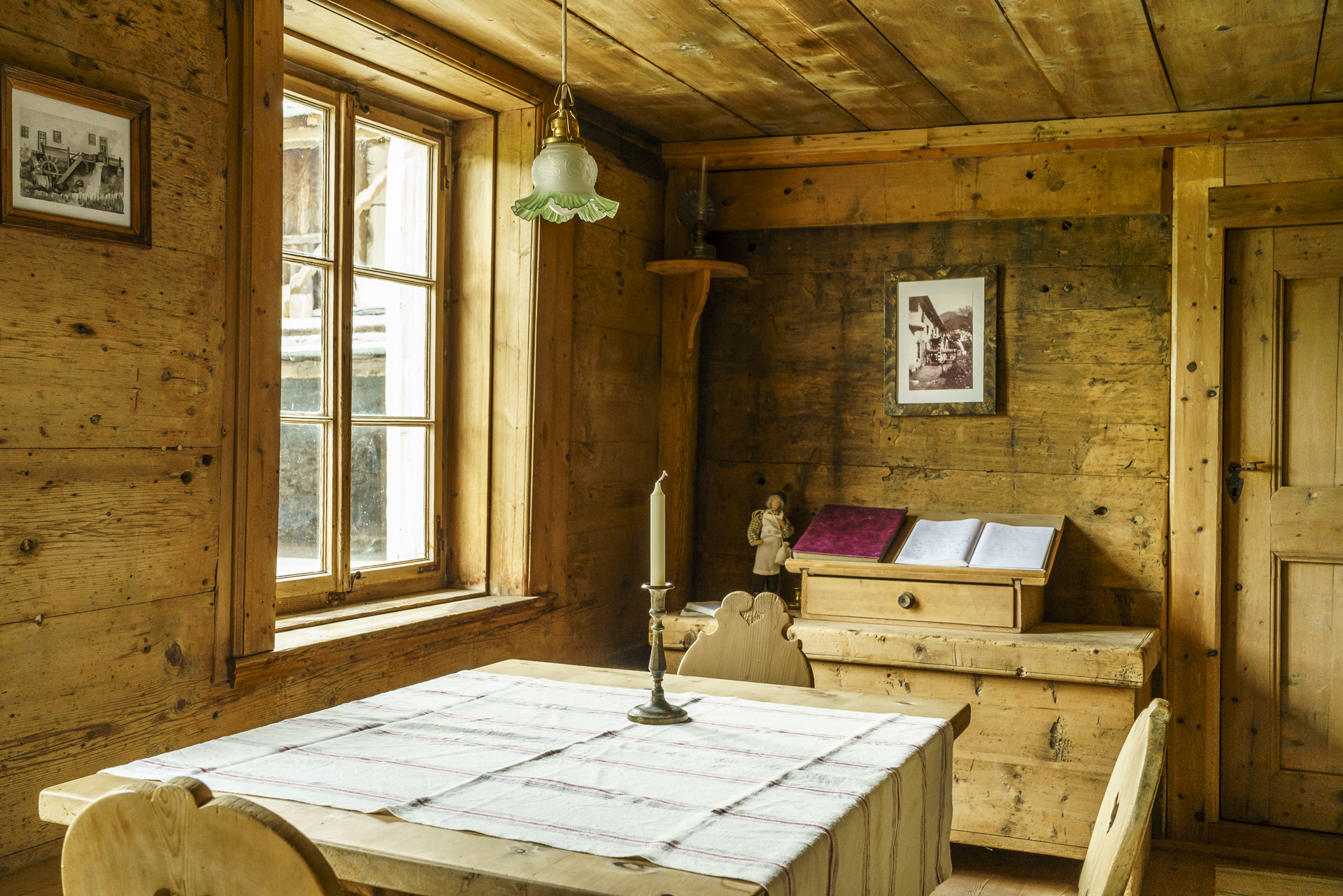
Tessanda: nimble fingers in demand |
Another company with a long tradition is the Tessanda hand weaving mill. If you don’t get weak at the sight of all the beautiful handmade products in the store: Chapeau! I definitely couldn’t resist and bought a small toiletry bag and a mini wallet. Our colourful lunch bags are also made here. When I look into the weaving rooms, I can’t get out of the jam. I would definitely be the most unsuitable employee ever here – this dexterity and the tangle of threads. I am very impressed! Effective “weaving” is still the easiest. Much more complicated and, above all, time-consuming is the preparation of the various threads. However, a sense of achievement is still guaranteed in the weekly weaving courses, one of the weavers reassures me. I would probably be a challenge – there are definitely reasons why I decided to take the elective subject Latin in secondary school – to which an hour of manual work was sacrificed. On the other hand, I’m a good customer and can’t leave Tessanda without nice, practical souvenirs.




World Heritage Site in Müstair
After this exciting tour through Sta. Maria, we make our way back to Müstair on foot and choose the route of the Way of St. James and the third stage of the National Park Panorama Trail. We take a long walk through Müstair, marvel at beautiful facades and elaborately decorated entrances and visit the Benedictine monastery of St. Johann. A visit to the more than 1,000-year-old monastery complex and UNESCO World Heritage Site with unique wall paintings from Carolingian and Romanesque times is a must! For those who want to retreat from everyday life for a few days to reflect, the monastery offers the opportunity to spend the night in the guest house. This time we spend the night just a few meters from the monastery in a no less traditional accommodation. For almost 50 years, the Fasser family has been welcoming guests from all over the world in their carefully restored historic Münstertalerhaus Chasa Chalavaina. Creaking wooden floorboards, panelled pine parlours and the soot-blackened “Chadafö” take us back in time. Jon Fasser’s charming, reserved manner and the lovingly prepared dinner – seasonally spaetzle with game – speak for themselves.


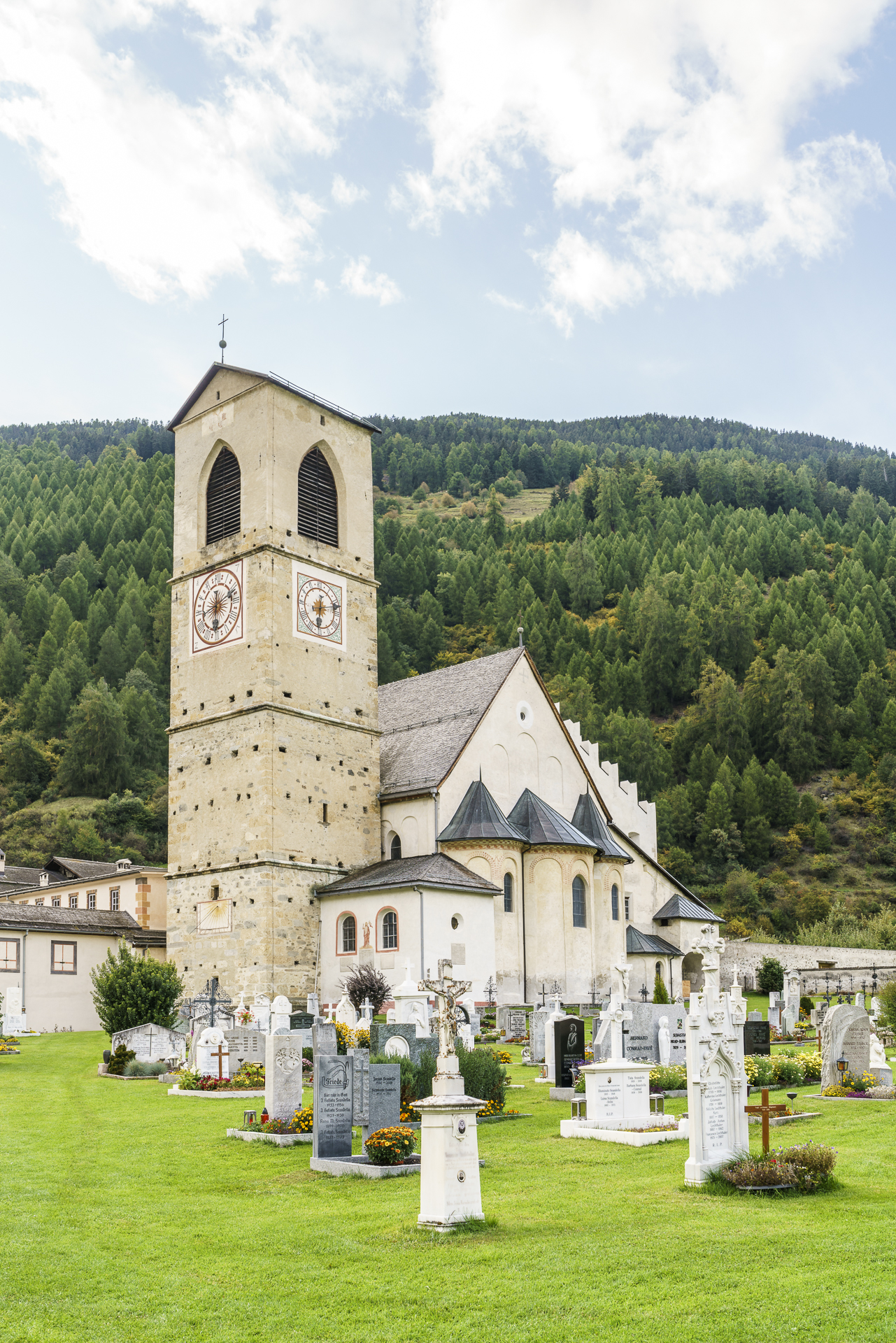

Idyll in Pütschai Josom above the Val Müstair
The next morning we make a detour to Pütschai Josom before returning home. Here, in an idyllic location above Sta. Maria, is one of two farm locations of the Lamprecht family. Since the Limousin suckler cows are still on the alp, the goats can enjoy being the centre of attention for once. The Lamprecht family relies on direct marketing and agriturismo on their organic farm. In the beautiful farmhouse in the typical architectural style of the valley, they have set up a spacious holiday apartment and also offer “sleeping in straw” in the summer months. A dream location for a few days of time out, surrounded by animals and pure nature – and also including a hotpot with the most wonderful panoramic view. For the nostalgic, the Lamprecht family has exhibited old agricultural equipment and the jewel in the apartment is the old forge corner, which has been preserved almost true to the original. This time, unfortunately, it remains a flying visit for us – but we have already made a note of Pütschai Josom as an ideal base for snowshoe tours through the freshly snow-covered Münstertal…


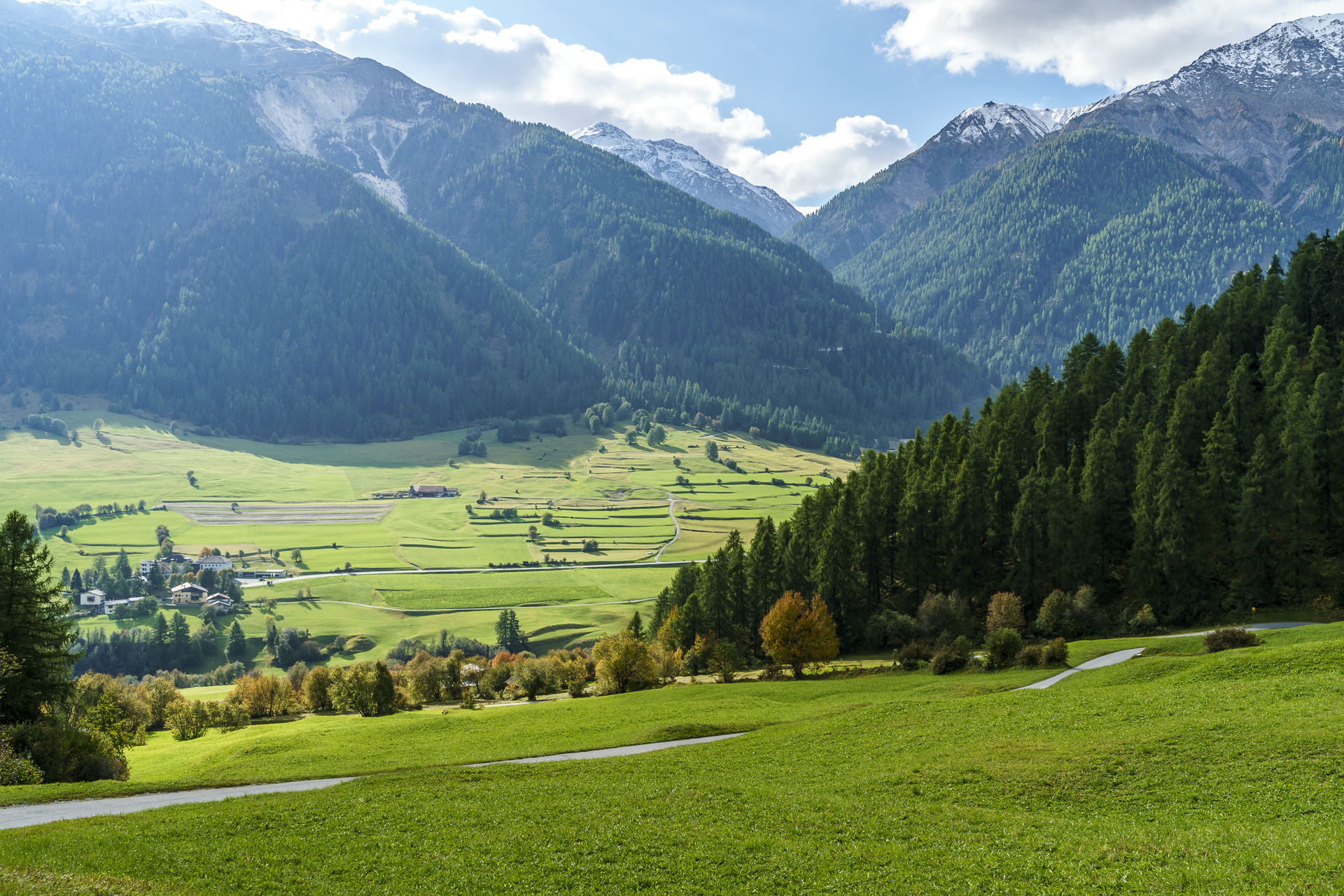








Leave a Reply